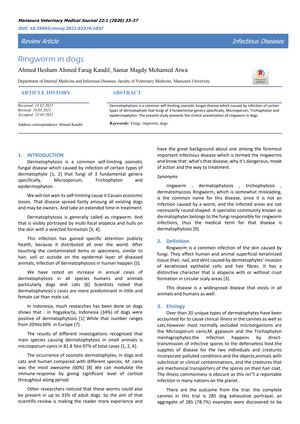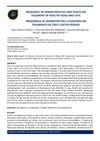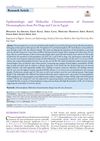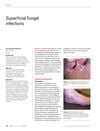Ringworm in Dogs: Dermatophytosis and Its Impact
March 2021
in “
Mansoura Veterinary Medical Journal /Mansoura Veterinary Medical Journal
”

TLDR Ringworm is a common, contagious fungal infection in dogs that can spread to humans and requires lengthy treatment.
Dermatophytosis, commonly known as ringworm, is a widespread zoonotic fungal disease caused by dermatophytes, primarily from the genera Microsporum, Trichophyton, and Epidermophyton. Despite being self-limiting, it is not ignored due to the economic losses it causes and its rapid spread among dogs and potentially their owners, requiring extended treatment times. The infection is characterized by multifocal alopecia and crusts on the skin. It is a public health concern due to its global distribution and transmission through contact with contaminated items or animals. A significant increase in annual cases of dermatophytosis has been observed in both humans and animals, especially dogs and cats. Studies have shown that in Yogyakarta, Indonesia, 34% of dogs tested positive for dermatophytosis, while in Europe, the prevalence ranges from 20% to 30%. Microsporum canis was identified as the main species causing dermatophytosis in small animals, accounting for 81.8% to 97% of cases. Additionally, M. canis was the most prevalent zoonotic dermatophyte in dogs, cats, and humans. The immune response to the infection can be modulated by administering high levels of cortisol over a prolonged period.



